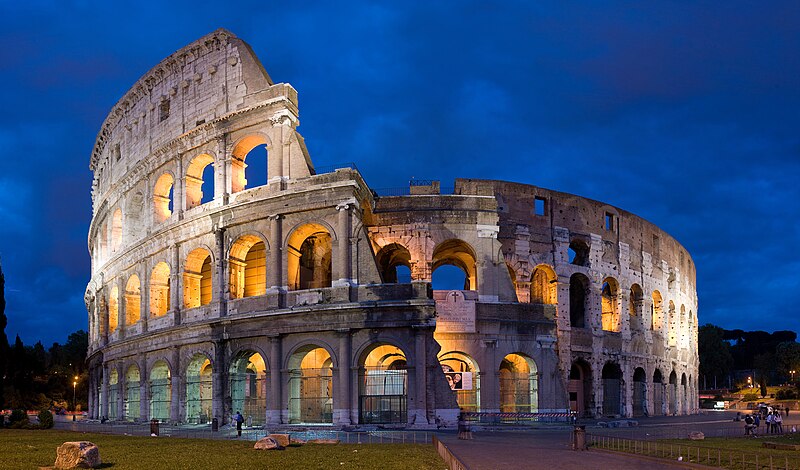Difference between revisions of "About Italy"
(Created page with "{{#eimage:http://upload.wikimedia.org/wikipedia/commons/thumb/5/53/Colosseum_in_Rome%2C_Italy_-_April_2007.jpg/800px-Colosseum_in_Rome%2C_Italy_-_April_2007.jpg|410x579px|thum...") |
m |
||
| Line 3: | Line 3: | ||
[[Italy]] became a nation-state in 1861 when the regional states of the peninsula, along with Sardinia and Sicily, were united under King Victor EMMANUEL II. An era of parliamentary government came to a close in the early 1920s when Benito MUSSOLINI established a Fascist dictatorship. His alliance with [[Nazi Germany]] led to [[Italy]]'s defeat in World War II. A democratic republic replaced the monarchy in 1946 and economic revival followed. [[Italy]] is a charter member of NATO and the European Economic Community (EEC). It has been at the forefront of European economic and political unification, joining the Economic and Monetary Union in 1999. Persistent problems include sluggish economic growth, high youth and female unemployment, organized crime, corruption, and economic disparities between southern [[Italy]] and the more prosperous north. | [[Italy]] became a nation-state in 1861 when the regional states of the peninsula, along with Sardinia and Sicily, were united under King Victor EMMANUEL II. An era of parliamentary government came to a close in the early 1920s when Benito MUSSOLINI established a Fascist dictatorship. His alliance with [[Nazi Germany]] led to [[Italy]]'s defeat in World War II. A democratic republic replaced the monarchy in 1946 and economic revival followed. [[Italy]] is a charter member of NATO and the European Economic Community (EEC). It has been at the forefront of European economic and political unification, joining the Economic and Monetary Union in 1999. Persistent problems include sluggish economic growth, high youth and female unemployment, organized crime, corruption, and economic disparities between southern [[Italy]] and the more prosperous north. | ||
| − | Source: | + | Source: www.cia.gov/library/publications/the-world-factbook/geos/it.html |
Back to [[Adopting from Italy]] | Back to [[Adopting from Italy]] | ||
Latest revision as of 02:33, 25 March 2018
Italy became a nation-state in 1861 when the regional states of the peninsula, along with Sardinia and Sicily, were united under King Victor EMMANUEL II. An era of parliamentary government came to a close in the early 1920s when Benito MUSSOLINI established a Fascist dictatorship. His alliance with Nazi Germany led to Italy's defeat in World War II. A democratic republic replaced the monarchy in 1946 and economic revival followed. Italy is a charter member of NATO and the European Economic Community (EEC). It has been at the forefront of European economic and political unification, joining the Economic and Monetary Union in 1999. Persistent problems include sluggish economic growth, high youth and female unemployment, organized crime, corruption, and economic disparities between southern Italy and the more prosperous north.
Source: www.cia.gov/library/publications/the-world-factbook/geos/it.html
Back to Adopting from Italy
